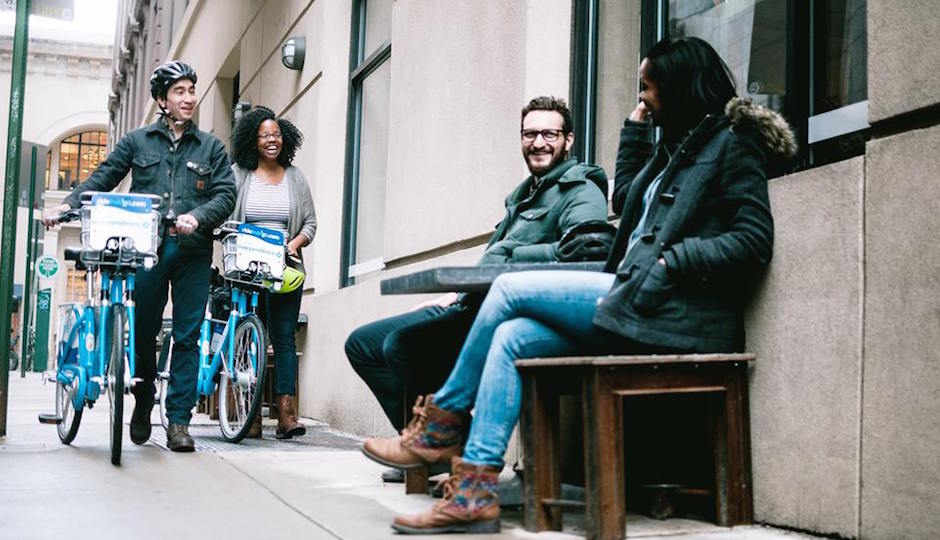Can Philly Have Nice Things? Indego May Be the Ultimate Test

Source: Indego on Facebook.
I met my dad in Chicago last fall for a weekend of great meals, baseball-watching and long walk-and-talks. It was during one of the latter events — a lengthy trek along the Lakefront Trail — that I noticed we were repeatedly being passed by people on identical bikes: pale blue cruisers with baskets on the front. I quickly realized that I’d happened upon Divvy, the Windy City’s version of bike share, and that Divvy was kind of a big deal there.
It got me excited for the arrival of Philadelphia’s bike share — the “Indego” service finally starts this week — but it also kind of got me antsy: “I hope Philly doesn’t screw this up.”
While it’s true that Philadelphia deserves nice things — and Indego is a nice thing — it’s also true that we sometimes do bad things to those nice things. It’s going to be great for us carless city residents to have another transportation option, to zip short distances quickly, but it’s also easy to imagine that a year down the line our shiny new toys will have aged into a janky fleet of busted, graffiti-covered eyesores.
Can we have nice things? With so many moving parts — literally — Indego may be the ultimate test of that question.
Done right, the new service can become an integral part of the city’s transportation system. Done wrong — well, done wrong, it’ll be a hugely wasted opportunity. It’ll take the entire community, and not just bicycle riders, to make it a success. Here’s what we need to do:
• Riders: There are two things you can do — use the system, and use it safely. Bike share systems have proven successful in other cities in large part because so many people started using them quickly.
But they also proved successful because there have been so few injuries associated with the program. In its first year, for example, New York’s CitiBike didn’t have a single rider killed on the road, even though riders had taken more than 8 million rides during that time. That statistic helped silence doubters and strengthened the system: If you want Indego to last a while, then, you’ll strap on a helmet before you begin your ride — and obey the rules of the road while you’re out there.
• Drivers: The arrival of Indego is likely to lead to an uptick in bicyclists sharing your streets. This may even enrage some of you. Remember: Every bicycle you see on the streets means that rider isn’t in a much larger car, clogging the roads, competing for parking spaces, and making you later to work. So take a deep breath, think happy thoughts, and try to drive with awareness that you are sharing the road.
• City Hall: Yes, Bicycle Transit Systems is running the show, but it’s City Hall that will ultimately be held accountable for the success or failure of the new service. Flexibility and nimbleness are what’s called for here: Flexibility to change plans if the original plan isn’t working — the map of bike stations today may not look like the map a year from now — and nimbleness to keep the fleet afloat: Nobody’s going to want to ride the aforementioned graffiti-covered busted-down bike, so quick-turnaround maintenance will be essential to Indego’s success.
And there are reasons to think Indego will be successful. Most importantly among them, planners kept the service both simple and cheap: For an annual fee of just $10, you can hop on any bike in the system for $4 an hour. Pretty cool.
Bicycle culture has been growing and maturing — fitfully at times, but still — for years in Philadelphia: We’re ready to take the next step; we just have to be smart and thoughtful about it. Surely we can do that. See you on the streets.
Follow @JoelMMathis on Twitter.


